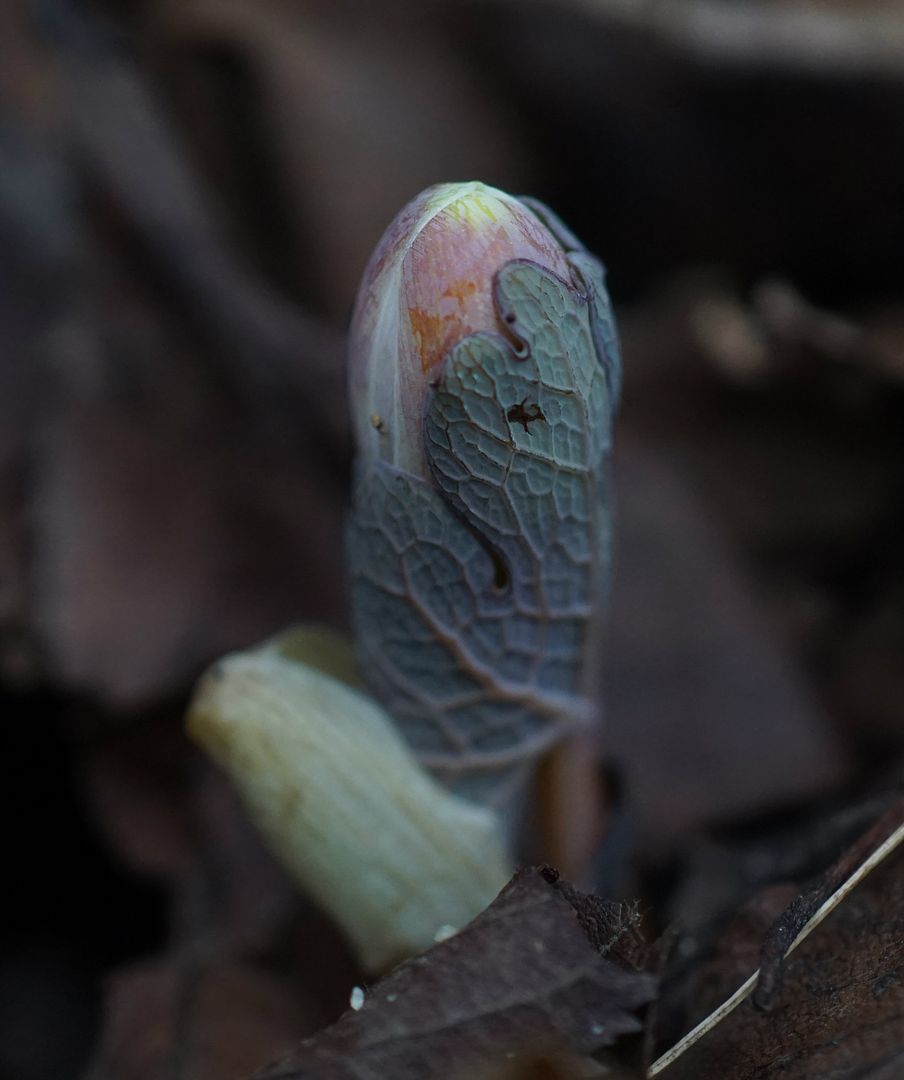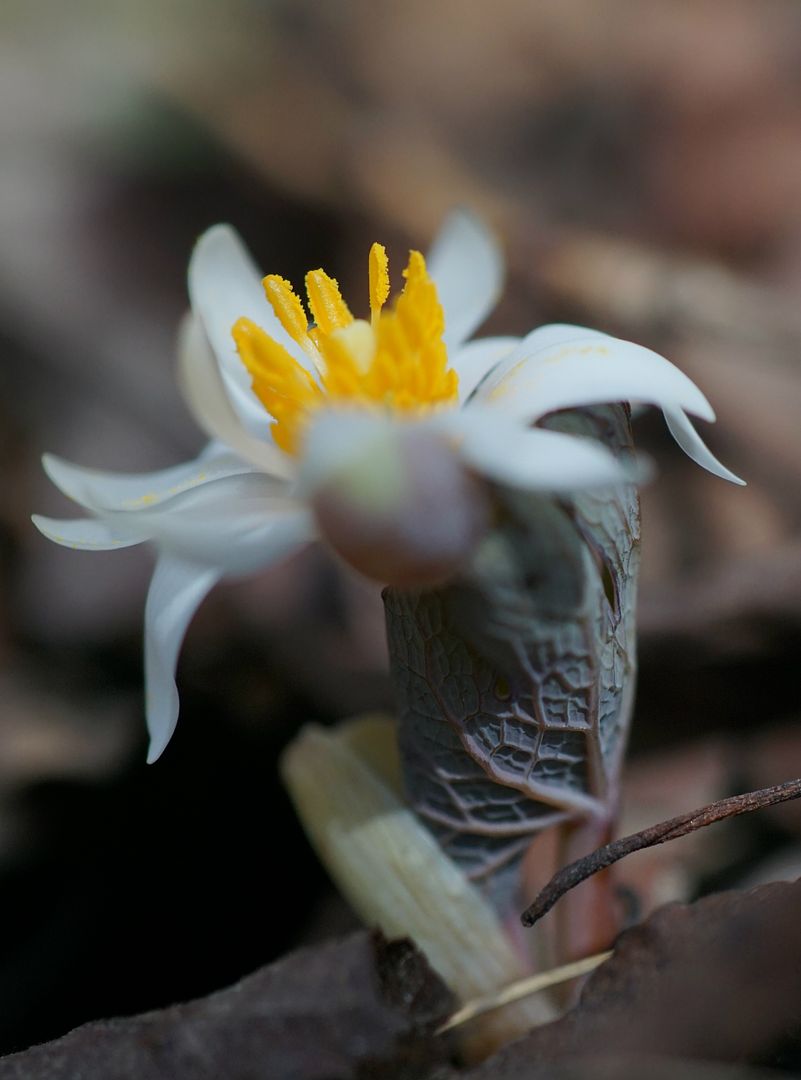A few years ago I threw a packet of Bloodroot seeds out in the front garden. I dug a little trench and planted them, and two years later I started to see very tiny leaves poking out of the ground. One leaf per plant. They remained this small size for two more years and then suddenly one or two made the jump to a great big leaf more typical of the species.
This year three of those plants have decided to flower which is great, but also I'll say so far none of the others have emerged... of the whole seed packet maybe only three have survived. What's odd though is that last year one may have flowers because I found one with a seed head. But this one plant has yet to emerge, whereas the three I see flowering today I didn't even notice last year and I find this to be odd. Perhaps rodents or something are making off with the young shoots before the plants have a chance to grow?
Bloodroot, Sanguinaria canadensis, is in the poppy family. The flowers only produce pollen and don't have any nectar or floral oils of note. So you'll never see Bloodroot Honey being sold unless someone is grinding up the root and physically mixing it in with the honey, which begs the question, why?
The flowers to the true species the true species are short lived, lasting about three "good" days. If the flower stays closed due to rain or it being too cloudy, it doesn't seem to count towards the three days. I believe there are cultivars which bloom slightly longer which tend to be "double flowering" but this term is a little tenuous.
All three of my Bloodroot plants are technically "double flowering" because they have more than 8 petals, which is what you find in established plants in the wild. No plant wants to be "double flowering" because it means they're producing more petals instead of reproductive structures, and thus won't make as many seeds. Plants do this when they're not getting the right nutrients or enough of them in the soil. It's the plant's way of cutting its losses, but can get to the point where they don't have any reproductive structures at all.
This isn't restricted to Bloodroot. A flame Azalea I bought at Lowes actually came that way, very likely because in the 7 years it takes a nursery to grow a shrub to a sell-able size it wasn't fertilized enough. The following year it flowered normally though so it may have been stressed.
So clearly "double flowering" is a nutrient issue... yet there are cultivars that are reliably "double flowering." This is because the plant likely has a mutation which hinders it's own ability to take in certain nutrients. This also means this cultivar can't be propagated by seed. That's not to say that they don't produce seeds, rather and the inability to take in certain nutrients is likely from a recessive gene, so the plant has to be reproduced by cuttings or division of the roots.
Coming back to my Bloodroot plants, hopefully their rhizomes get a chance to spread out and grow into a nice sized clump. Ants actually disperse the seeds to these plants, so hopefully I'll get to play around with that later this year. This is the main reason I'm growing this and several other native ephemerals.
In the past, I've bought Bloodroot plants as bare roots. These grew the first year and flowered, but sadly something came along and ate all of them. Which is annoying. I've noticed with several species though that plants started from seed tend to fair better and aren't devoured by wildlife as much.


